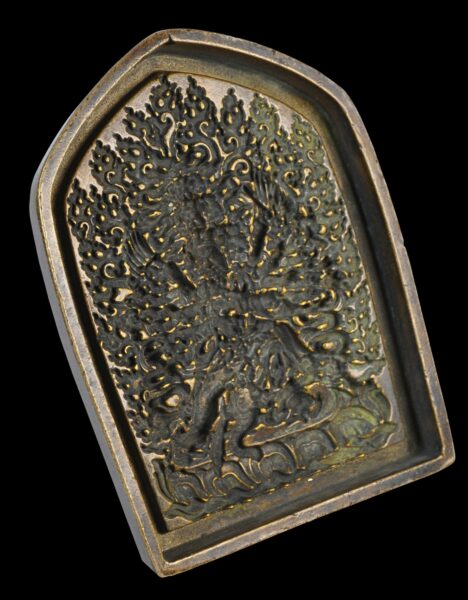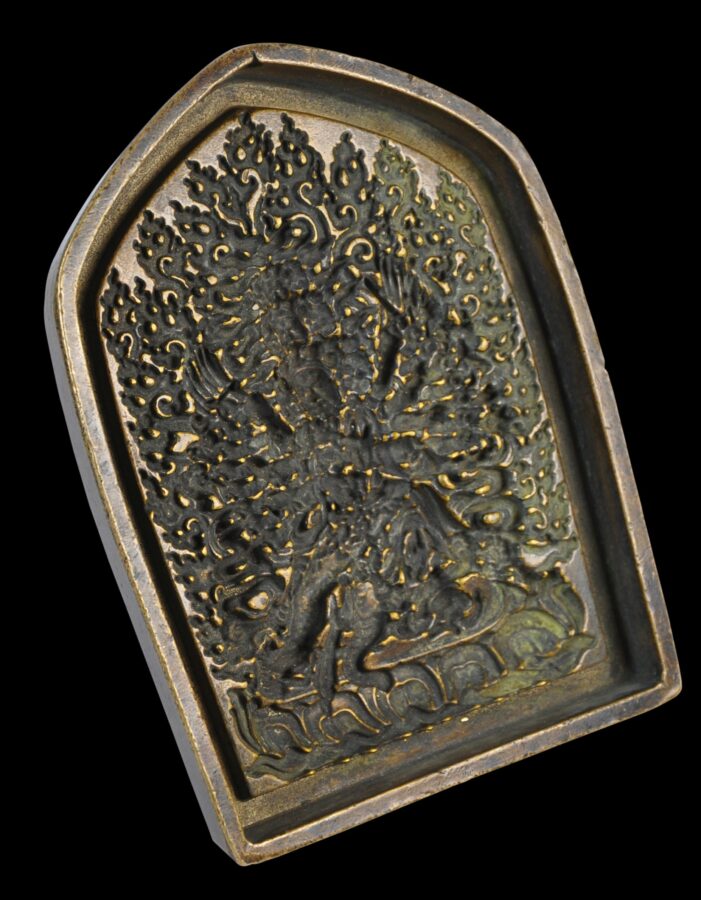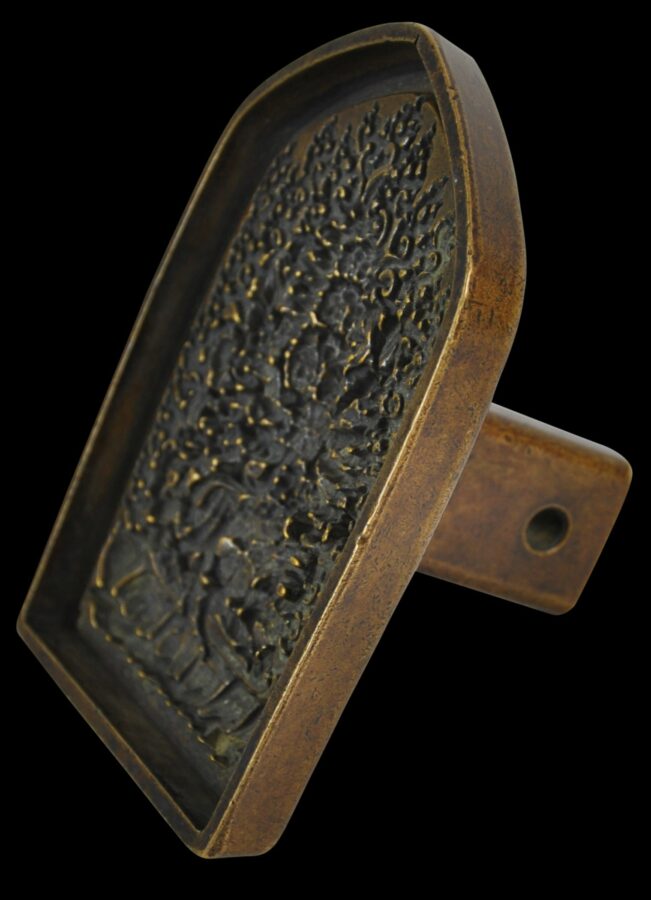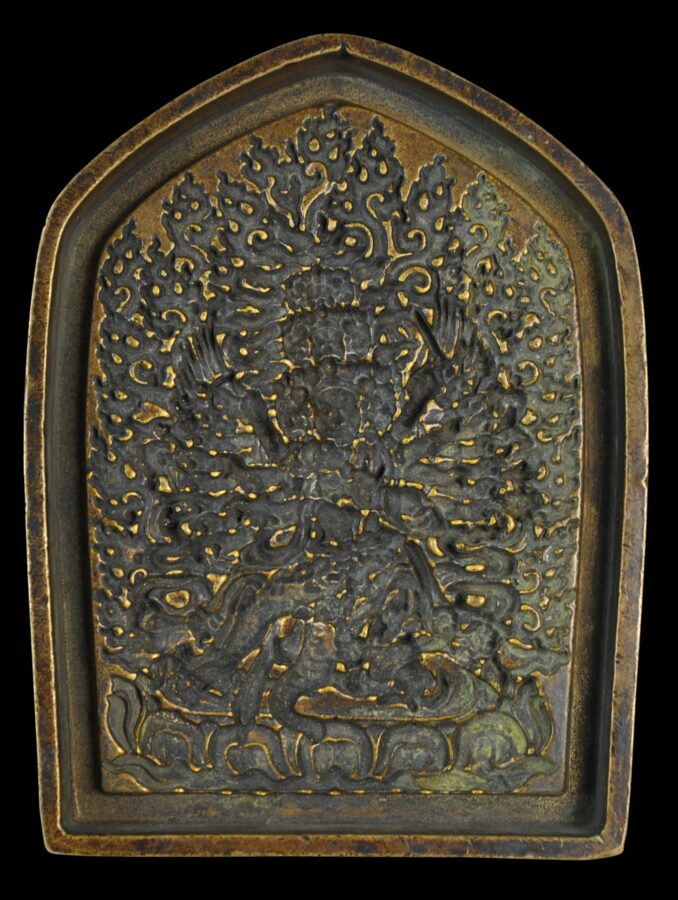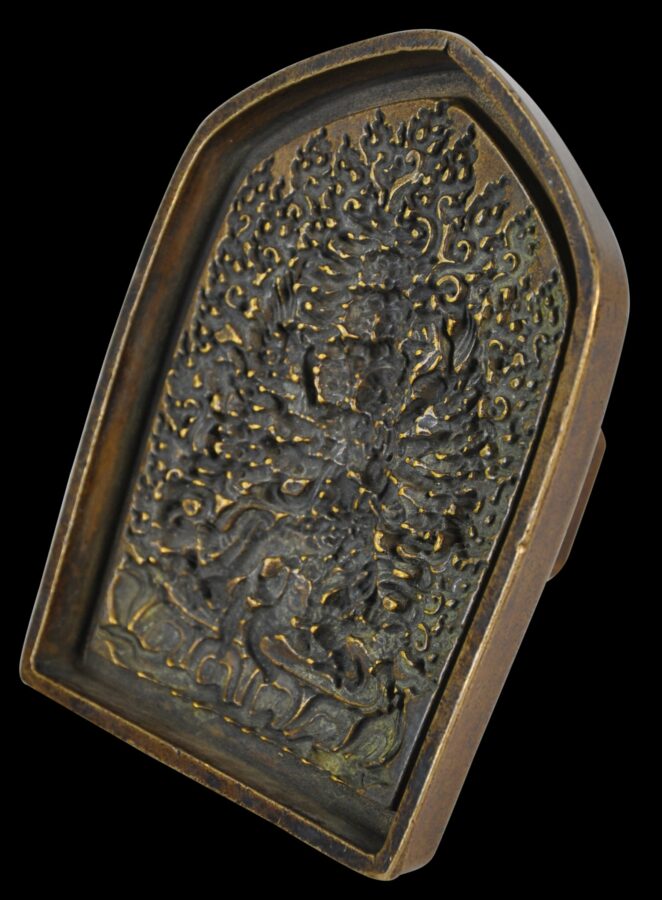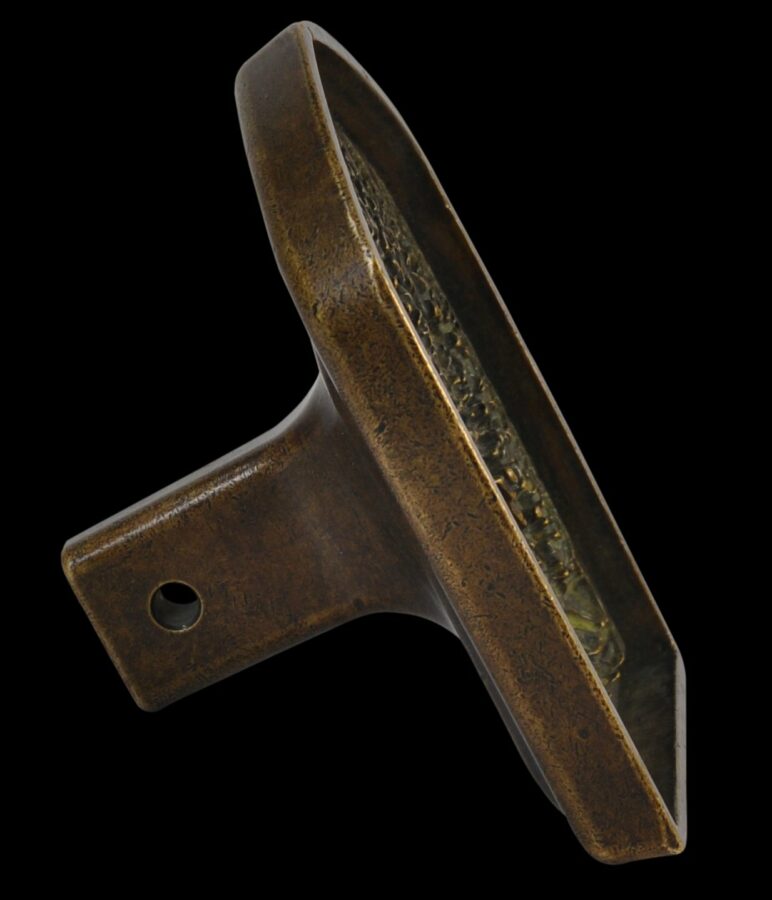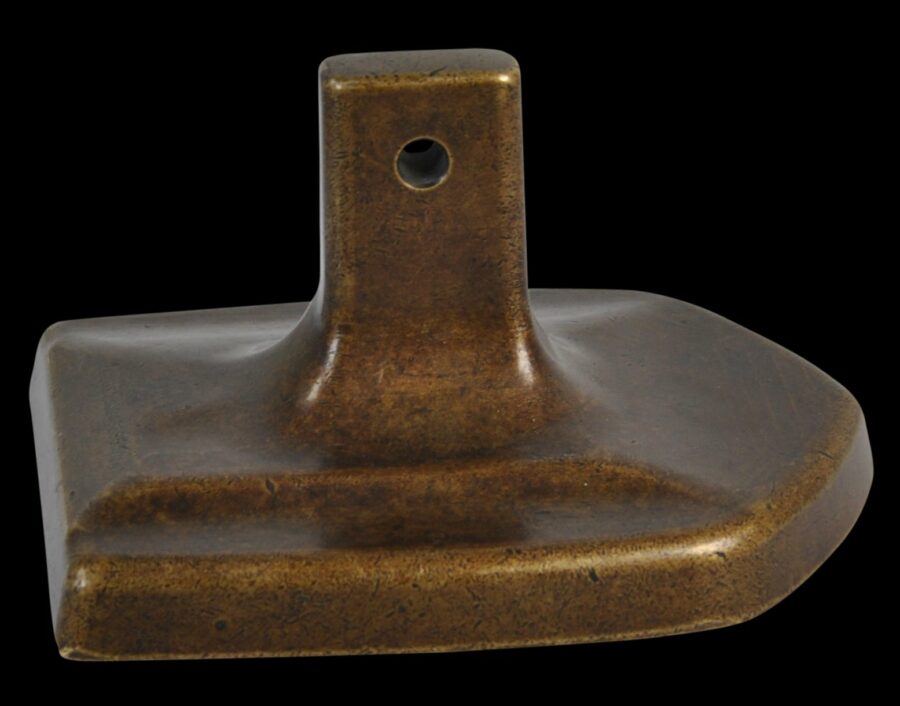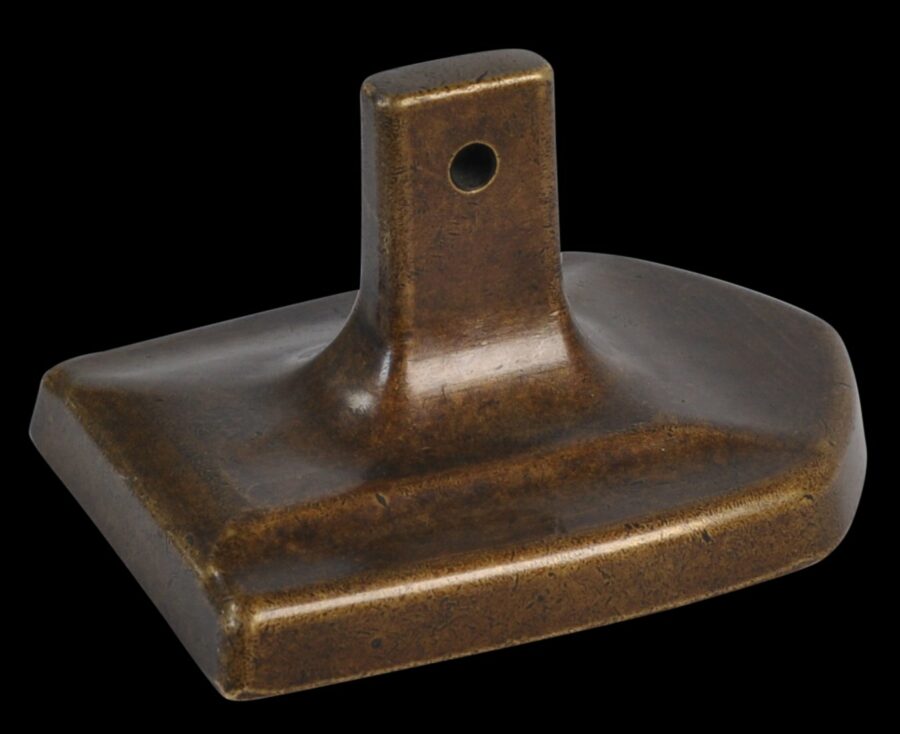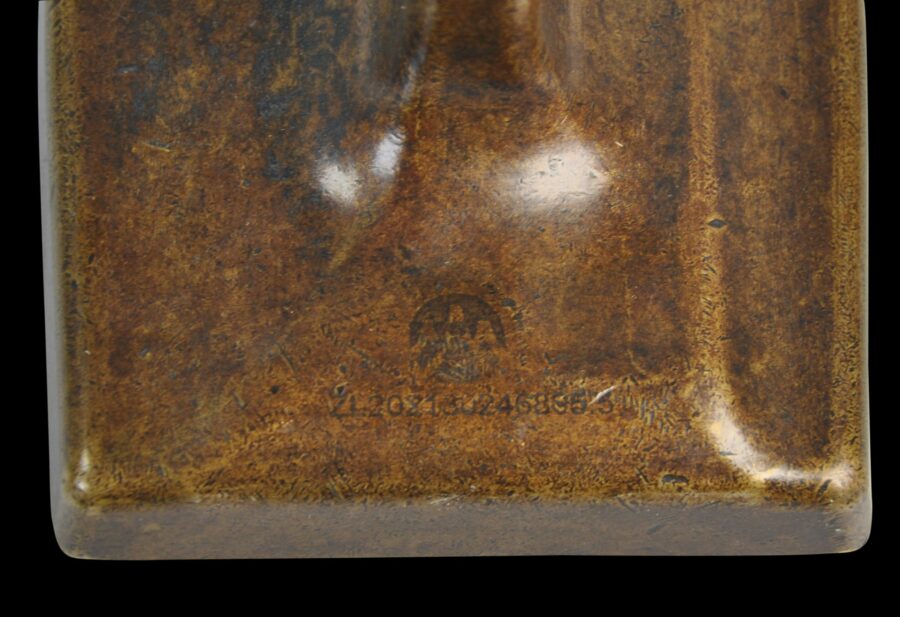This very fine cast brass mould dates to at least the 18th century and possibly earlier. Such moulds were used in Tibet to make votive plaques.
Clay mixed with ritual materials such as ground incense, grains and/or the ashes of a sacred individual would have been pressed into the mould, removed and then dried in the sun. (Prosser, 2010, p. 87).
Called a tsha-tsha in Tibet, such a plaque increased the Buddhist merit attributable to the individual who commissioned it, and even to those who viewed it. Tsha-tshas often were left as offerings at sites of pilgrimage.
The example here has been cast with an image of Hayagriva, surrounded by flames, who is identified typically by having a small head of a horse emerging from his headdress. In Tibet, Hayagriva was considered able to cure diseases, especially skin diseases – even as serious as leprosy. Hayagriva was considered a wrathful form of Vajrasattva.
The mould has an attractive colour and a central finial or pull on the reverse.
There is an old, neat inventory number stencilled to the handle side.
It is in excellent condition. It is sculptural in its own right. The mould has a splendid patina, colour and softness from handling and age.
References
Proser, A., (ed.), Pilgrimage and Buddhist Art, Asia Society Museum/Yale University Press, 2010.


